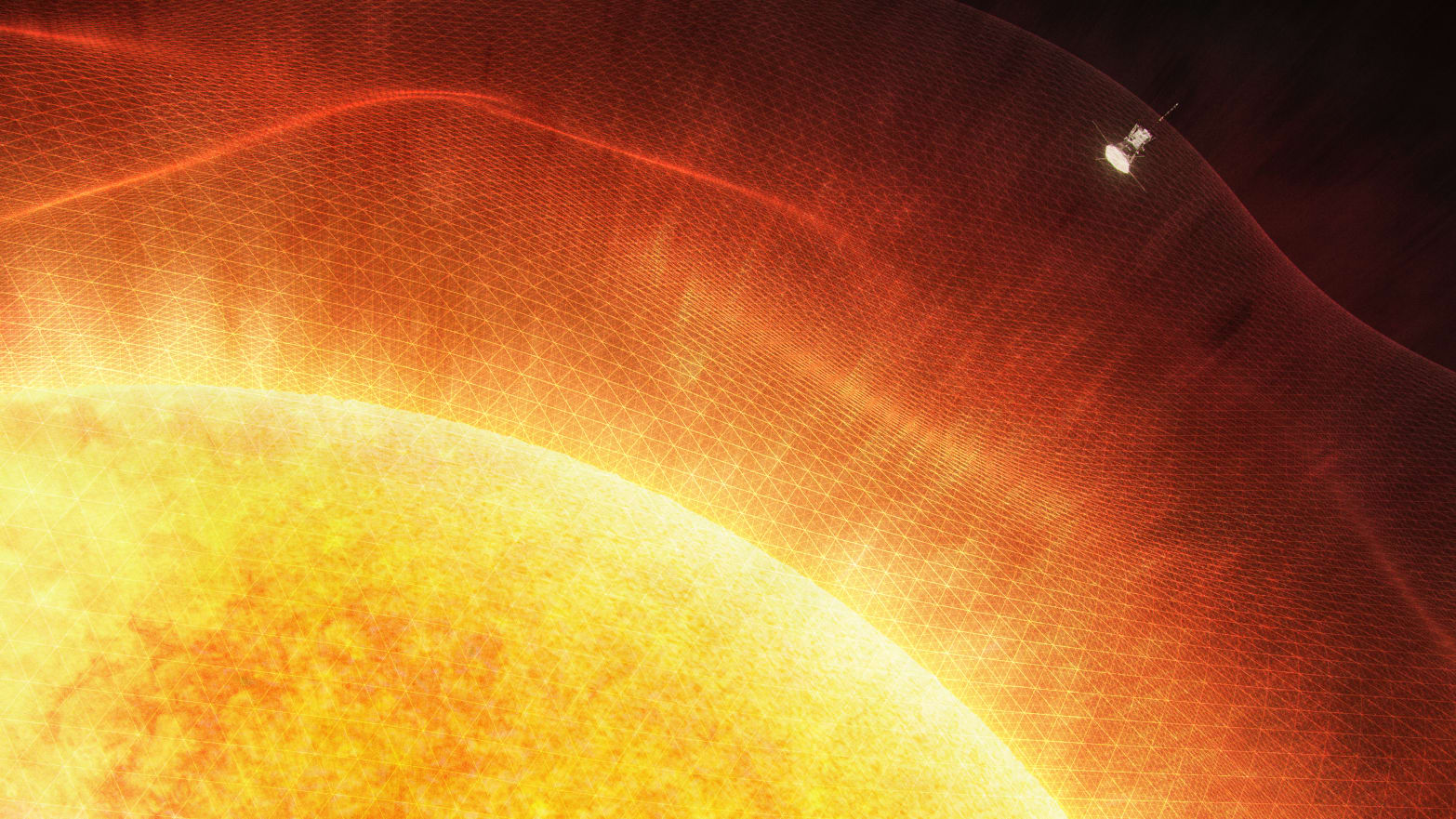For the first time in history, an object made by humans entered the sun’s atmosphere—and lived to tell the tale. NASA’s Parker Solar Probe spent five hours catching rays and collecting data in the sun’s corona before moving back out to a safer, more distant orbit.
It’s the closest we’ve ever gotten to visiting a star, and the new data could open up huge doors in our understanding of how the sun evolved and how it now behaves. The new findings were published Tuesday in Physical Review Letters.
“Parker Solar Probe ‘touching the sun’ is a monumental moment for solar science and a truly remarkable feat,” NASA associate administrator Thomas Zurbuchen said in a statement. “Not only does this milestone provide us with deeper insights into our sun's evolution and its impacts on our solar system, but everything we learn about our own star also teaches us more about stars in the rest of the universe.”
Parker was launched in 2018 with the goal of one day making it to the sun’s corona—an outer boundary of plasma that extends millions of miles beyond the surface of a star. Remember the 2017 solar eclipse? The bright light you saw? stretching from the sun’s shadow is the corona, home to temperatures of up to 1,800,000 degrees Fahrenheit.
Luckily, the little probe didn’t have to face temperatures nearly that high—the layer of the corona it ventured into is called the Alfvén critical surface, a place where the probe’s 4.5-inch-thick carbon-composite solar shields are hit by a balmy 2,500 degrees Fahrenheit.
Though cooler, the Alfvén critical surface is a no less critical part of the sun to study. It’s where the sun’s gravitational and magnetic forms start to mingle and influence the direction and speed of ultra-shared particles known as solar wind.
Solar wind travels at 80 percent the speed of light. High amounts can have a serious impact on the function of our satellites and energy grids. Scientists want to use data from the Alfvén critical surface to better forecast solar wind activity and give us earlier warnings when some nasty space weather is headed our way and threatening an electrical blackout.
“Flying so close to the sun, Parker Solar Probe now senses conditions in the magnetically dominated layer of the solar atmosphere—the corona—that we never could before,” Nour Raouafi, a Parker project scientist at Johns Hopkins University, said in a statement. “We see evidence of being in the corona in magnetic field data, solar wind data, and visually in images. We can actually see the spacecraft flying through coronal structures that can be observed during a total solar eclipse.”

